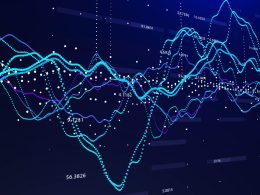by Jeffrey J. Roach, Chief Economist, LPL Financial
Catalyst for Market Volatility
The Chinese firm, DeepSeek, has created a catalyst for volatility in recent days, so how should investors think about this piece of news? The Chinese AI firm created a publicly available open-source platform that seemed to supplant domestic leadership in AI development. Perhaps America’s place at the forefront of technological innovation is over; however, it may be premature to address that concern. The LPL Research team published a blog on the topic recently: “DeepSeek: What Happened and What Are Possible Implications?”
Over the last two years, America has been leading the way in AI. American companies have created large language models, developed better technology in the form of stronger graphics processing units (GPUs), and implemented AI products in preexisting services. Domestic innovation continues to rise to new heights as the U.S. has long been a leader in technological advancements, thanks to substantial investments in research and development (R&D), a robust higher education system, and a dynamic entrepreneurial ecosystem.
U.S. Innovation Continues to Rise

Disclosures: All indexes are unmanaged and can’t be invested directly. Past performance is no guarantee of future results.
The Bloomberg Innovation Index includes R&D expenditure as a percentage of gross domestic product (GDP), manufacturing value-added per capita, number of domestic high-tech public companies as a share of world’s total high-tech public companies, postsecondary education, the research job market, and patent filings.
The arrival of a competitor’s product that is seemingly just as good but free to the consumer and cheaper to produce, has challenged the idea that America will lead the way in further developments. But in recent days, we have learned more of the safety and security concerns surrounding the free, open-sourced chatbot. Not to mention the questionable data collection practices and potential vulnerabilities in DeepSeek’s infrastructure.
Aside from DeepSeek and questions about America’s ability to innovate, U.S. exceptionalism is partially based on the dollar’s de facto status as the world’s reserve currency. Dating back to the immediate aftermath of the Second World War, rivals have been attempting to undermine the dollar. Allies have also complained about the advantages America receives from its status, with de Gaulle’s government decrying America’s “exorbitant position” in international finance.
Global Payments by Currency

Disclosures: Past performance is no guarantee of future results.
The modern extension of these frustrations can be seen in the actions of Russia and China as they seek to provide their own currencies as alternatives to the dollar. However, with the dollar being used in nearly half of global transactions, its status is safe as the world’s reserve currency and will continue to buttress the idea of American Exceptionalism.
A dominant currency is an important factor in trade negotiations. As investors anticipate the effects of tariffs on trade relations, business planning, and consumer prices, they should remember the currency responses throughout 2017 and 2018 during the previous Trump tariffs. Dollar appreciation should offset some of the impacts as research from the National Bureau of Economic Research (NBER) showed.1
In fact, a stronger dollar along with a weaker yuan absorbed a fair amount of the impact during the previous administration’s trade policies.
Recent GDP growth and stock market performance also support the idea of American Exceptionalism. Through the recovery from the COVID-19 pandemic and the subsequent period of rising inflation, America fared much better than other developed nations. America experienced greater GDP growth than its peers, such as the United Kingdom, leading Eurozone economies, and Japan. In addition to consistent GDP growth, America’s stock markets continued to perform well. The S&P 500 outperformed leading indexes from the United Kingdom, the Eurozone, Japan, and China over the last two years and as of the end of 2024, America represents approximately 50% of the world’s equity market cap.
U.S. Stocks as a Percentage of World Market Cap

Disclosures: All indexes are unmanaged and cannot be invested in directly. Past performance is no guarantee of future results.
Conclusion
U.S. exceptionalism remains for several fundamental reasons. The dollar maintains its status as the world's reserve currency. Despite attempts by rivals and complaints from allies, the dollar remains dominant, used in nearly half of global transactions. The role of domestic markets also helps define exceptionalism. As of early 2025, the total market capitalization of the U.S. stock market was approximately $62.2 trillion. The global stock market's total market capitalization was around $116 trillion, which means the U.S. market cap represents over half of the world's total market capitalization.
The new approach to AI likely does not jeopardize the bull market, as broader market participation and Federal Reserve rate cuts are likely to act as tailwinds. From a technical perspective, the S&P 500 remains near record-high territory amid improving market breadth and momentum. Technical damage within the heavy-weight tech sector has been minimal as buyers stepped up near support from the mid-January lows. Despite the January 27 pullback, sector breadth is also holding up relatively well, with the majority of tech stocks trading above their 200-day moving average. However, technical damage has been more pronounced on a relative basis, as the tech sector vs. S&P 500 ratio chart recently dropped to multi-month lows.
Of course, with great privilege comes great responsibility.













